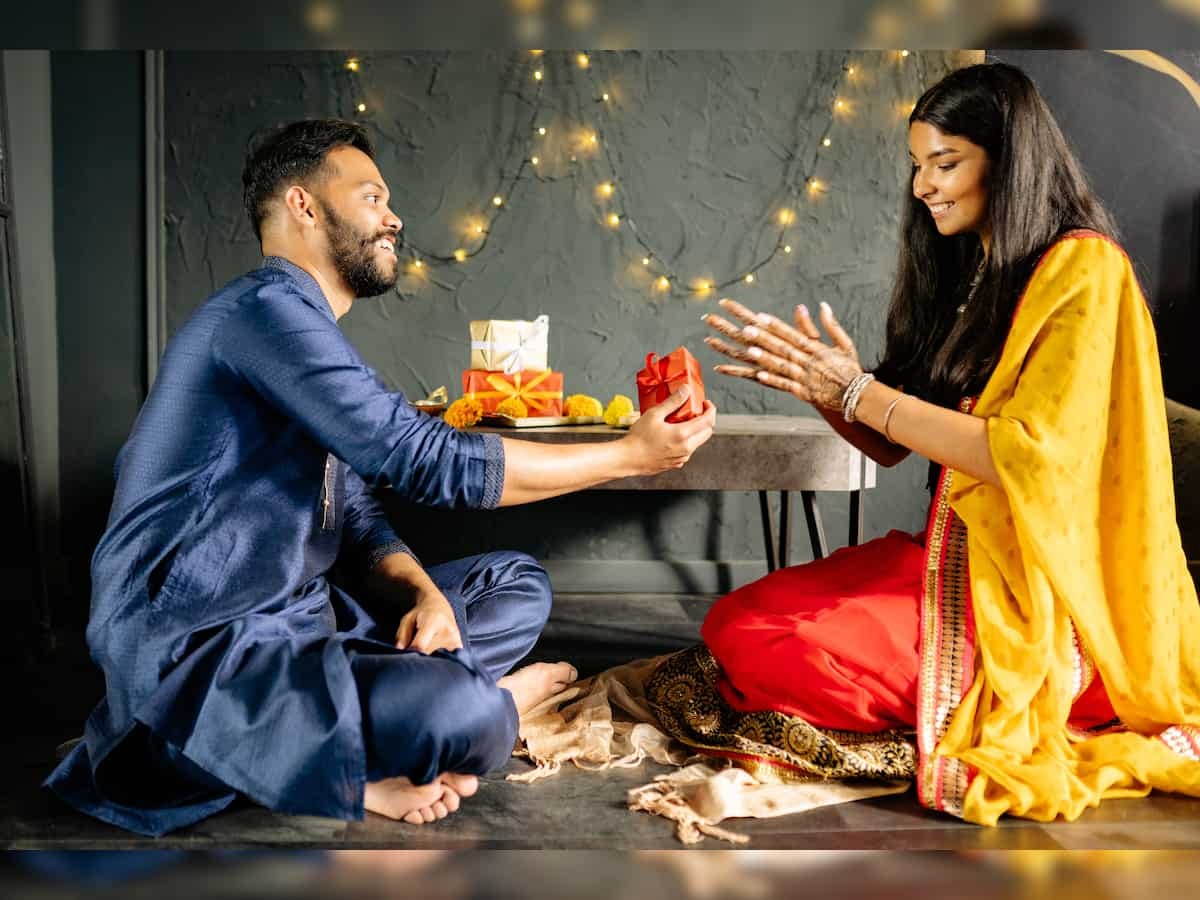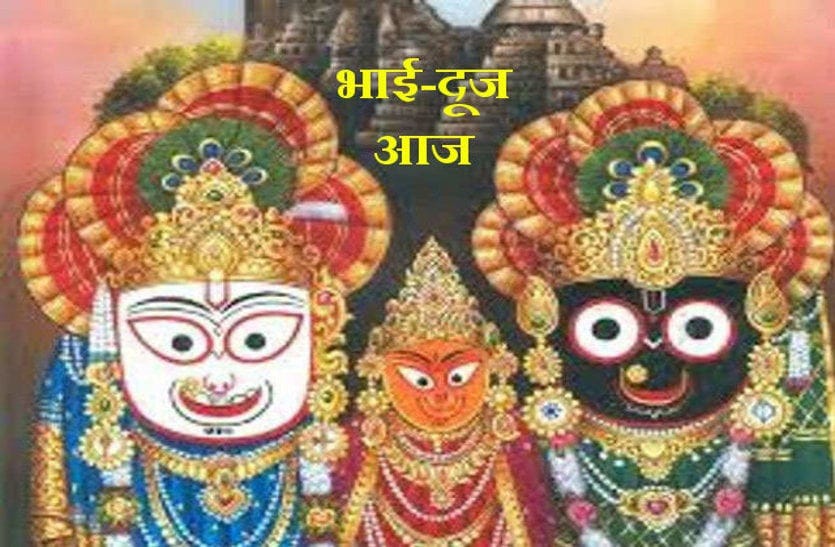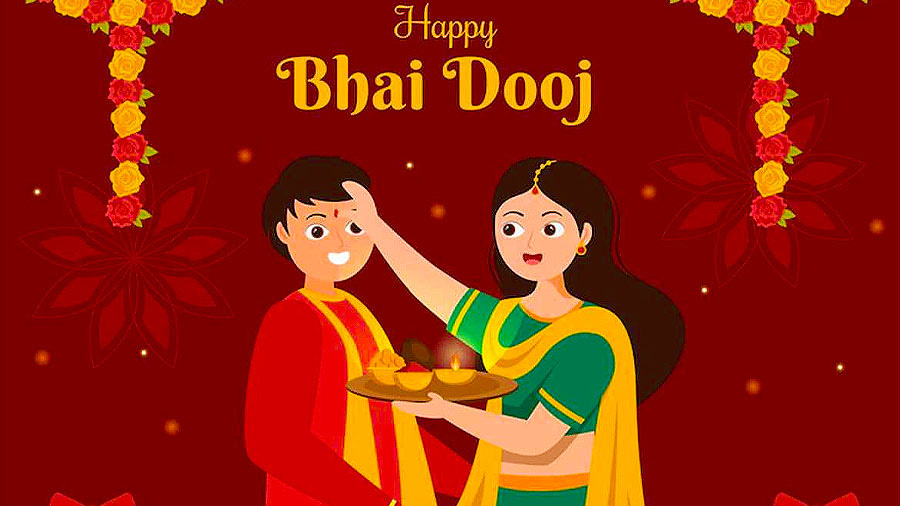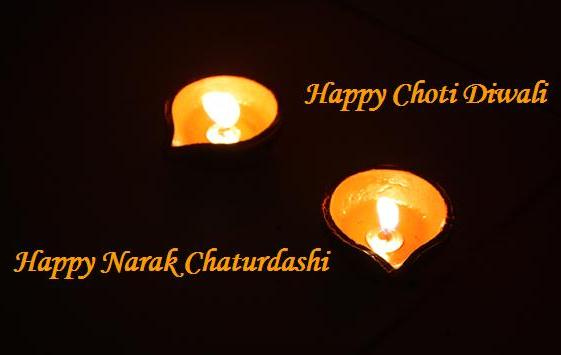Bhai Dooj: Celebrating the Brother-Sister Bond
Traditionally observed two days post-Diwali, Bhai Dooj centers around Lord Krishna's lesser-known yet pivotal role in the festival's history.

The Essence of Bhai Dooj
Bhai Dooj, also celebrated as Bhau-Beej, Bhai Tikka, or Bhai Phonta, is a cherished Indian festival that honours the unique and protective bond between brothers and sisters. Falling on the second lunar day of Shukla Paksha in the Hindu month of Kartik—typically two days after Diwali—it is steeped in ritual and family tradition. This year, in 2024, Bhai Dooj will be observed on 3rd November, with the auspicious tilak ceremony for brothers set between 1:10 PM and 3:22 PM. This day reaffirms familial ties, enveloping families across India in a glow of blessings and goodwill that continues the Diwali spirit.
The Story Behind the Festival
The festival's origins are rooted in Hindu mythology. One of the most popular stories tells of Lord Krishna visiting his sister, Subhadra, the wife of Arjuna, after slaying the demon Narakasura1. Subhadra2 welcomed him with sweets and flowers, and applied a ceremonial tilak, a mark on the forehead, as a mark of protection and as a symbol of their sibling love.
Another narrative involves Yama, the God of Death, and his sister Yamuna. Yama visits his sister after a long period, and she welcomes him with an aarti and applies a tilak. Yama, pleased by this reception, grants her a boon that the day be celebrated in his name, marking the inception of Bhai Dooj.
Regional Variations
Bhai Dooj is celebrated with different customs across various regions of India. In West Bengal, it is known as Bhai Phonta, where sisters apply a sandalwood paste tilak on their brothers' foreheads. In Maharashtra, the festival is known as Bhau Beej, marked by sisters performing an aarti and praying for their brothers' long life.
Bhai Dooj Vs. Raksha Bandhan
While Bhai Dooj and Raksha Bandhan both celebrate the brother-sister bond, they differ in their customs and timing. Raksha Bandhan, celebrated on the Full Moon in the month of Shravana (August), involves sisters tying a rakhi (a sacred thread) on their brothers' wrists as a symbol of protection. The brothers, in return, promise to protect their sisters and often gift them. This festival is more about the protective nature of the brother-sister relationship.
Bhai Dooj, on the other hand, focuses more on the reciprocal affection and respect between siblings. Here, the sister performs an aarti and applies a tilak on the brother's forehead, praying for his long life and prosperity. The brothers offer gifts in return, but the emphasis is more on the ritual and the blessings.
Significance and Celebration
The significance of Bhai Dooj lies in its emphasis on family ties and the nurturing of fraternal affection. It's a day when siblings take time out of their busy schedules to be together, rekindling childhood memories and strengthening their bond. The festival is also an opportunity for family reunions, where traditional delicacies and sweets are prepared and shared.
In modern times, the festival has adapted to contemporary lifestyles. Siblings who cannot meet send their wishes and gifts through various means, including digital platforms. However, the essence of Bhai Dooj remains rooted in the warmth and love shared between brothers and sisters.
Summing Up
Bhai Dooj is more than just a traditional ritual; it is a celebration of the enduring and loving bond between brothers and sisters. It reinforces familial bonds and reflects the rich cultural heritage of India, showcasing the importance given to family relationships in Indian society. Each year, as brothers and sisters come together to celebrate this special occasion, they reaffirm their love and commitment to each other, continuing a tradition that has been cherished for generations.
Subhadra was Lord Krishna's sister and also the wife of Arjuna, the great Pandav warrior of the Mahabharat fame. In Hindu mythology, particularly in the epic Mahabharata, Subhadra holds a significant role. She was the daughter of Vasudeva and Rohini, making her Lord Krishna's half-sister. (For details, view the YouTube video above.)
The story of Subhadra and Arjuna's union is quite interesting and significant in the Mahabharata. Arjuna, during his period of exile, arrives at the city of Dwarka, where he meets Subhadra. With the help of Lord Krishna, Arjuna abducts Subhadra. However, this act of abduction was done with Subhadra's consent and was a socially accepted norm for Kshatriyas (warrior class) in those times for courting or choosing their life partners.
Lord Krishna, playing the role of a brother and a mediator, convinces his and Subhadra's family to accept this union. Thus, Subhadra becomes Arjuna's wife, and later, she is the mother of Abhimanyu, a central character in the Mahabharata, known for his bravery and tragic death in the Kurukshetra war.
The relationship between Subhadra and Arjuna is often celebrated in Indian culture and is seen as an example of love and devotion. Subhadra's character, although not as extensively detailed as other major figures in the Mahabharata, is revered and respected. Her dual role as Lord Krishna's devoted sister and Arjuna's loving wife presents a unique blend of familial and marital devotion.







